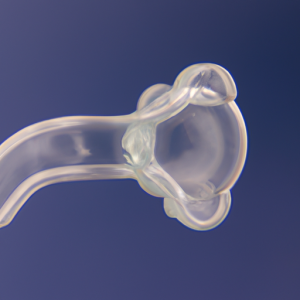Running is a popular form of exercise that can not only help individuals shed unwanted pounds but also improve their endurance levels. Whether you are a fitness enthusiast or a beginner looking to achieve weight loss goals, running can be an effective tool in your journey towards overall fitness. However, it is important to understand the diagnosis, symptoms, causes, and treatments associated with running-related issues to ensure a safe and successful running routine. In this article, we will explore the benefits of running for weight loss and endurance, delve into the diagnosis and symptoms of running-related issues, and uncover the causes and effective treatments for running-related injuries. By understanding these key aspects, you can optimize your running routine and achieve your fitness goals while minimizing the risk of injuries or setbacks.
1. "The Benefits of Running for Weight Loss and Endurance"
Running is a popular and effective form of exercise for those looking to shed some pounds and boost their endurance levels. Incorporating running into your fitness routine can bring about numerous benefits that go beyond just weight loss. In this section, we will delve into the advantages of running for weight loss and endurance.
First and foremost, running is an excellent way to burn calories and lose weight. When you engage in this high-intensity cardiovascular exercise, your body taps into its fat stores to provide energy. As a result, running helps to create a calorie deficit, which is essential for weight loss. Regular running sessions, combined with a healthy diet, can contribute to shedding unwanted pounds and achieving your desired body weight.
Furthermore, running helps increase your metabolism even after you finish your workout. This is due to the concept of excess post-exercise oxygen consumption (EPOC), commonly known as the "afterburn effect." Intense activities like running elevate your heart rate and oxygen consumption, leading to a higher metabolic rate post-workout. This means that even when you’re resting, your body continues to burn calories, aiding in weight loss.
Running not only helps in shedding excess weight but also improves overall endurance. Regular running sessions challenge your cardiovascular system, forcing it to adapt and become more efficient over time. As you build endurance, your heart becomes stronger and more efficient at pumping blood, delivering oxygen to your muscles, and removing waste products. This increased efficiency allows you to sustain physical activity for longer durations, enhancing your endurance levels.
Moreover, running stimulates the production of endorphins, often referred to as the "feel-good" hormones. These chemicals are responsible for reducing stress, anxiety, and depression, ultimately enhancing your overall well-being. Consequently, a positive mindset and improved mental health can further motivate you to stick to your weight loss and endurance goals.
Running is a versatile exercise
2. "Understanding the Diagnosis and Symptoms of Running-Related Issues"
Understanding the Diagnosis and Symptoms of Running-Related Issues
Running is a popular form of exercise for individuals looking to lose weight and improve their endurance. However, like any physical activity, running can sometimes lead to certain issues or injuries that may hinder progress or cause discomfort. It is important for runners to understand the diagnosis and symptoms of these running-related issues in order to address them effectively and prevent further complications.
One common running-related issue is shin splints, also known as medial tibial stress syndrome. This condition causes pain along the inner edge of the shinbone and is often experienced by new runners or those who suddenly increase the intensity or duration of their runs. The diagnosis of shin splints is typically made based on the symptoms reported by the runner, which include tenderness, swelling, and aching pain in the lower leg. Rest, ice, compression, and elevation (RICE) therapy is often recommended as the initial treatment for shin splints, along with modifying the running routine to decrease impact and gradually increasing intensity.
Another prevalent issue among runners is plantar fasciitis, characterized by pain and inflammation in the heel or bottom of the foot. This condition occurs when the plantar fascia, a thick band of tissue connecting the heel bone to the toes, becomes strained or damaged. Runners often experience stabbing pain in the morning or after prolonged periods of rest. The diagnosis of plantar fasciitis is usually made based on the runner’s symptoms and physical examination findings. Treatment options may include rest, stretching exercises, wearing supportive shoes or orthotics, and using ice or anti-inflammatory medications to reduce pain and inflammation.
Runners may also encounter IT band syndrome, which affects the iliotibial (IT) band, a thick band of tissue that runs along the outside of the thigh. This condition is often caused by repetitive motion and overuse
3. "Uncovering the Causes and Effective Treatments for Running-Related Injuries"
Running is a popular form of exercise for individuals looking to lose weight and improve their endurance. However, it is not without its risks, as running-related injuries can occur due to various factors. Understanding the causes of these injuries and effective treatments is crucial for runners to prevent and manage them effectively.
One of the primary causes of running-related injuries is overuse. Pushing the body beyond its limits without adequate rest and recovery can lead to stress fractures, muscle strains, and tendonitis. It is essential for runners to gradually increase their mileage and intensity, allowing their bodies to adapt to the demands of running. Failing to do so can result in injuries that sideline individuals from their training goals.
Improper running form is another common cause of injuries. Poor biomechanics, such as excessive heel striking or overpronation, can place excessive stress on certain joints and muscles. This can lead to conditions like shin splints, IT band syndrome, and plantar fasciitis. Runners should focus on maintaining a proper posture, engaging their core muscles, and ensuring a midfoot strike to minimize the risk of these injuries.
Inadequate footwear can also contribute to running-related injuries. Wearing worn-out or ill-fitting shoes can result in insufficient support and cushioning, leading to discomfort and injuries. It is essential for runners to invest in good-quality running shoes that provide proper arch support and shock absorption. Additionally, replacing shoes after a certain mileage or when signs of wear and tear appear is crucial to prevent injuries.
When it comes to treating running-related injuries, early intervention is key. Resting and allowing the body time to heal is often the first step. Applying ice to the affected area can help reduce inflammation and pain. Physical therapy exercises, such as stretching and strengthening the muscles around the injury, can aid in the recovery process. In more severe cases, medical

